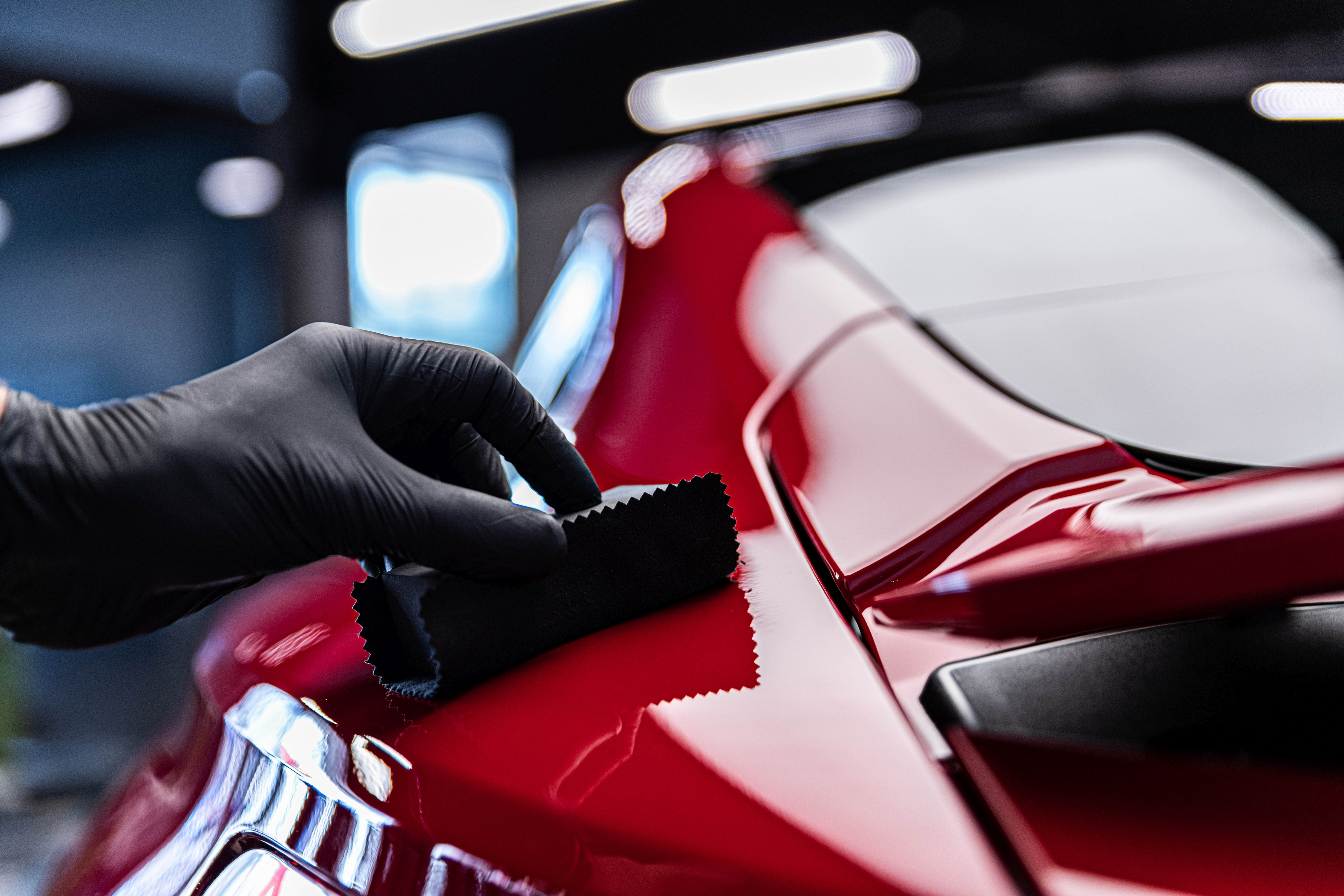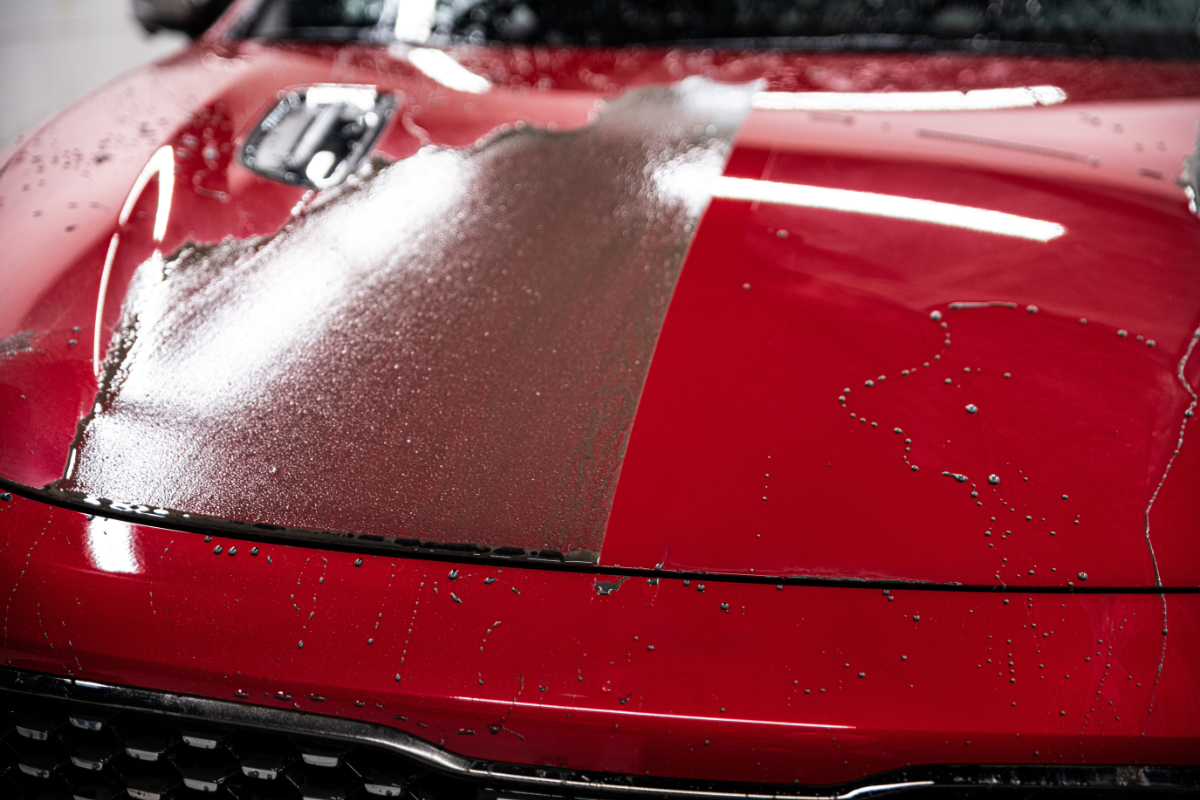Why Ceramic Coating Is the Ultimate Solution for a Remarkable Finish
Ceramic covering has emerged as a leading option for those seeking a flawless coating for their automobiles, thanks to its impressive sturdiness and safety functions. What aspects truly set ceramic coating apart?
What Is Ceramic Covering?

When used appropriately, ceramic layer creates a hydrophobic surface that wards off water and dust, making it easier to clean and preserve. Unlike traditional waxes or sealers, which usually supply short-lived security, ceramic coverings can last for several years, relying on the item quality and application method. The procedure of applying ceramic layer calls for meticulous preparation, including thorough cleansing and often repaint correction, to ensure ideal bonding and efficiency.
Ceramic layers are not restricted to automobile surface areas; they can also be utilized on various products, consisting of glass, metal, and plastics, offering a flexible remedy for boosting security. On the whole, ceramic covering stands for a significant advancement in surface area defense modern technology, incorporating both functional and aesthetic benefits for a vast variety of applications.
Advantages of Ceramic Layer
While several surface area protection alternatives exist, the benefits of ceramic covering stand apart due to its one-of-a-kind properties and long-lasting efficiency. One of the key advantages is its outstanding durability. Ceramic Coating Philadelphia. Unlike conventional wax or sealers that need regular reapplication, ceramic finishes offer a resilient layer that can last for numerous years, substantially minimizing upkeep initiatives
Another significant benefit is enhanced protection versus ecological pollutants. Ceramic coatings create a hydrophobic surface that drives away water, dirt, and different contaminants, making it easier to clean. This function not just preserves the vehicle's appearance but likewise reduces the danger of rust and oxidation, especially in rough climate problems.
Additionally, ceramic finishings supply exceptional resistance to UV rays, protecting against fading and degradation of paint gradually. This UV defense is critical for maintaining the aesthetic value of surfaces and cars subjected to route sunshine.
Furthermore, the glossy surface accomplished with ceramic finish improves the general visual charm, offering surface areas a showroom-quality shine. In general, ceramic finishes stand for a substantial improvement in surface area defense technology, supplying enduring benefits that satisfy both visual and useful requirements.
Exactly How It Works
Recognizing the scientific research behind ceramic layers reveals exactly how they offer such remarkable defense and durability. At its core, a ceramic next page finish is a liquid polymer that chemically bonds with the vehicle's manufacturing facility paint. This bonding creates a safety layer that is both oleophobic and hydrophobic, repelling water, dirt, and oil. The primary part of a lot of ceramic coverings is silicon dioxide (SiO2), which is acquired from quartz. This compound adds to the coating's hardness and resistance to scrapes, UV rays, and environmental impurities.
The application procedure involves several actions, consisting of surface preparation, which is crucial to achieving optimum adhesion. As soon as used, the covering goes through a healing process, throughout which it hardens and develops a semi-permanent bond with the paint surface area. This bond is what identifies ceramic coatings from typical waxes and sealers, giving a longer-lasting protective barrier that can withstand for years.
Additionally, the thickness of the coating can improve its safety top qualities, ensuring that it can endure harsh conditions. Eventually, the scientific research of ceramic finishings incorporates advanced products with cutting-edge application methods to supply an unparalleled level of defense and aesthetic enhancement for cars.
Comparison With Standard Techniques
When compared to conventional paint useful content protection approaches such as sealers and waxes,The advantages of ceramic finishes end up being particularly evident. While waxes offer a temporary shine, generally lasting a couple of weeks to a couple of months, ceramic finishes supply a durable safety layer that can endure for numerous years. This durability significantly reduces the frequency of reapplication, making ceramic coatings a more cost-efficient remedy gradually.
Furthermore, conventional methods usually call for extensive prep work and numerous applications to accomplish a satisfactory degree of protection. On the other hand, ceramic finishes bond at a molecular level with the vehicle's surface, developing a robust guard versus ecological pollutants like UV rays, acid rain, and roadway salts. This bond enhances the automobile's resistance to scrapes and swirl marks, which prevail with conventional waxes and sealers.
Furthermore, the hydrophobic residential or commercial properties of ceramic coatings drive away water and dirt, bring about simpler cleansing and maintenance. In comparison, wax and sealant-treated surfaces can draw in grime, requiring even more regular cleaning - Ceramic Coating Philadelphia. Generally, ceramic finishings not only provide premium defense however likewise deliver a more long-lasting and aesthetically enticing finish, developing them as the favored choice for discerning automobile owners
Application and Maintenance Tips

Utilizing a foam applicator, apply the covering in little sections, adhering to the producer's standards pertaining to density and overlap. Permit sufficient treating time between layers, typically 24 hours, to make certain correct bonding. After application, it is vital to avoid direct exposure to water or harsh aspects for at least a week to permit the finish to fully heal.
Additionally, utilizing a ceramic maintenance spray can enhance the coating's hydrophobic residential properties and long life. Routine inspections for any kind of indications of wear will assist preserve the layer's integrity and preserve that beautiful surface.
Final Thought
In conclusion, ceramic covering arises as a superior choice for attaining a perfect vehicle finish. By forming a durable bond with factory paint, ceramic layer effectively guards versus scrapes, UV rays, and environmental impurities.
